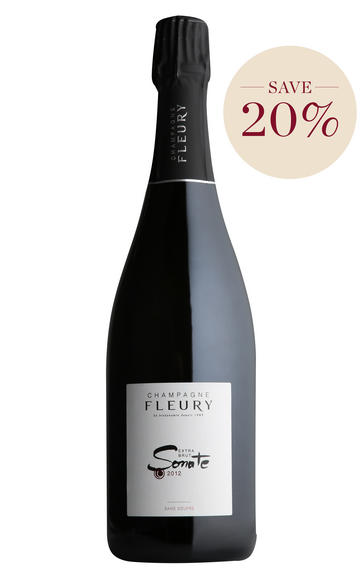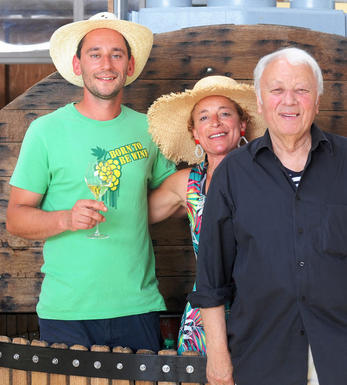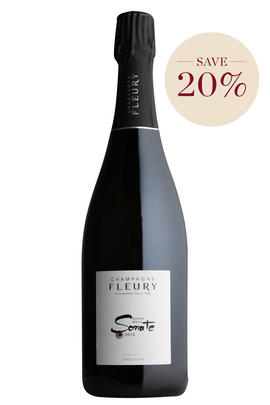
About this WINE

Champagne Fleury
Champagne Fleury has been in the business of winemaking for over 125 years and is respected as one of the region’s first pioneers of biodynamics. Despite its long history, Fleury has remained a family winery. It is located in the far south of Champagne, in the Côtes des Bar, where the terroir has a huge amount in common with the Grand Crus of Chablis.
Fleury has never stopped innovating. In 1989, they committed fully to organic and biodynamic practices, the first in the region to do so. The winery prides itself on personifying the “art of being natural”. In this spirit, Champagne Fleury isn’t afraid to go against the grain in the interest of coaxing the very best out of the terroir.
Perhaps due to this, Fleury cuvées have a distinctive vinous quality and display outstanding precision, thanks to the care taken by the team in growing them. The mature Champagnes are a conversation piece at any gathering, managing to balance an ethereal purity of fruit with an earthy sense of place.

Brut Champagne
Brut denotes a dry style of Champagne (less than 15 grams per litre). Most Champagne is non-vintage, produced from a blend from different years. The non-vintage blend is always based predominately on wines made from the current harvest, enriched with aged wines (their proportion and age varies by brand) from earlier harvests, which impart an additional level of complexity to the end wine. Champagnes from a single vintage are labelled with the year reference and with the description Millésimé.
Non-vintage Champagnes can improve with short-term ageing (typically two to three years), while vintages can develop over much longer periods (five to 30 years). The most exquisite and often top-priced expression of a house’s style is referred to as Prestige Cuvée. Famous examples include Louis Roederer's Cristal, Moët & Chandon's Dom Pérignon, and Pol Roger's Cuvée Sir Winston Churchill.
Recommended Producers : Krug, Billecart Salmon, Pol Roger, Bollinger, Salon, Gosset, Pierre Péters, Ruinart

Champagne blend
Which grapes are included in the blend, and their proportion, is one of the key factors determining the style of most Champagnes. Three grapes are used - Pinot Noir, Chardonnay and Pinot Meunier.
26% of vineyards in Champagne are planted with Chardonnay and it performs best on the Côtes des Blancs and on the chalk slopes south of Epernay. It is relatively simple to grow, although it buds early and thus is susceptible to spring frosts. It produces lighter, fresher wines than those from Burgundy and gives finesse, fruit and elegance to the final blend. It is the sole grape in Blancs de Blancs, which are some of the richest long-lived Champagnes produced.
Pinot Noir accounts for nearly 40% of the plantings in Champagne and lies at the heart of most blends - it gives Champagne its body, structure, strength and grip. It is planted across Champagne and particularly so in the southern Aube district.
The final component is Pinot Meunier and this constitutes nearly 35% of the plantings. Its durability and resistance to spring frosts make the Marne Valley, a notorious frost pocket, its natural home. It ripens well in poor years and produces a soft, fruity style of wine that is ideal for blending with the more assertive flavours of Pinot Noir. Producers allege that Pinot Meunier lacks ageing potential, but this does not deter Krug from including around 15% of it in their final blends.



Buying options
Add to wishlist
Description
Bright in the glass, with a light mousse, the 2012 Champagne Fleury Sonate is a blend of Fleury’s oldest vines in the vineyards of Côtes de Champraux and Charme de Fin. Only produced in the best years, the ’12 is a blend of 76% Pinot Noir and 24% Chardonnay. This is the top expression of the Fleury family, who do not use added sulphites, instead choosing to handle the grapes and wine carefully through vinification. The results are an explosive composition of fruit, charm and energy.
Based on the rich 2012 vintage, this wine undergoes natural fermentation and malolactic conversion in ceramic tank and oak barrique. A degree of oxidation protects this wine in barrel, and the resulting wine is richly textural, with ripe yellow peach oozing hazelnut cream, fleshy plums mingle with wild herbs and candied pineapple. There is a delicious golden toasty richness, chewy like the caramelized edges of tarte tatin, but the finish is firmly fresh, earthy & mineral.
Drink now to 2030
Davy Żyw, Senior Wine Buyer, Berry Bros. & Rudd (Oct 2021)
wine at a glance
Delivery and quality guarantee